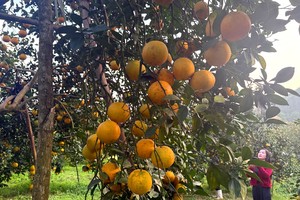
White marble in Nghe An Province is mainly distributed in Quy Hop District with reserves of hundreds of thousands of tons. For many years, white marble products of Nghe An Province, such as white cobblestone, superfine white marble powder, and ashlar stone, have mainly been exported through the ports of Cua Lo, Hai Phong, and Nghi Son.
According to the Import-Export Management Department under the Department of Industry and Trade of Nghe An Province, in 2018, the province exported 1,210 million tons of raw white marble, bringing in more than US$24.18 million, while it exported 383,667 tons of superfine white marble powder, collecting $40.51 million in return. Only about 24 percent of white marble was processed for export, whereas the remaining 76 percent was for raw export.
In 2020, the export of raw white cobblestone was 1,246 million tons, earning nearly $24 million, while that of superfine white marble powder was nearly 590,000 tons, earning $47 million. It means that only about 32 percent of exported white marble had been through processing, the remaining nearly 68 percent was raw export.
According to the above data, on average, the value of one ton of raw white marble is about $20, while that of superfine white marble powder is equivalent to about $90-$100. If more than 1.2 million tons of raw white marble exported in 2020 had been processed into superfine white marble powder before exporting, about $100 million would have been collected. If the amount of raw white marble exported from 2017 to 2020 had been processed into powder before exporting, more than $400 million would have been earned.
According to many experts, this fact shows that the difference in value between the export of raw materials and processed products is too large. Facing the situation of white marble drain, experts recommended that authorities should limit or even prohibit the export of raw white marble to promote deep processing before exporting.
























